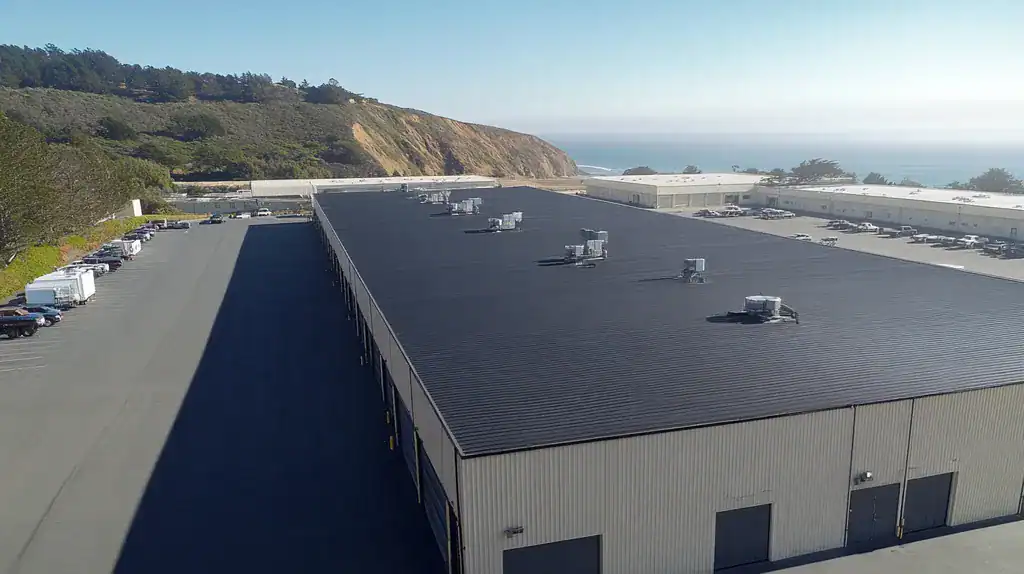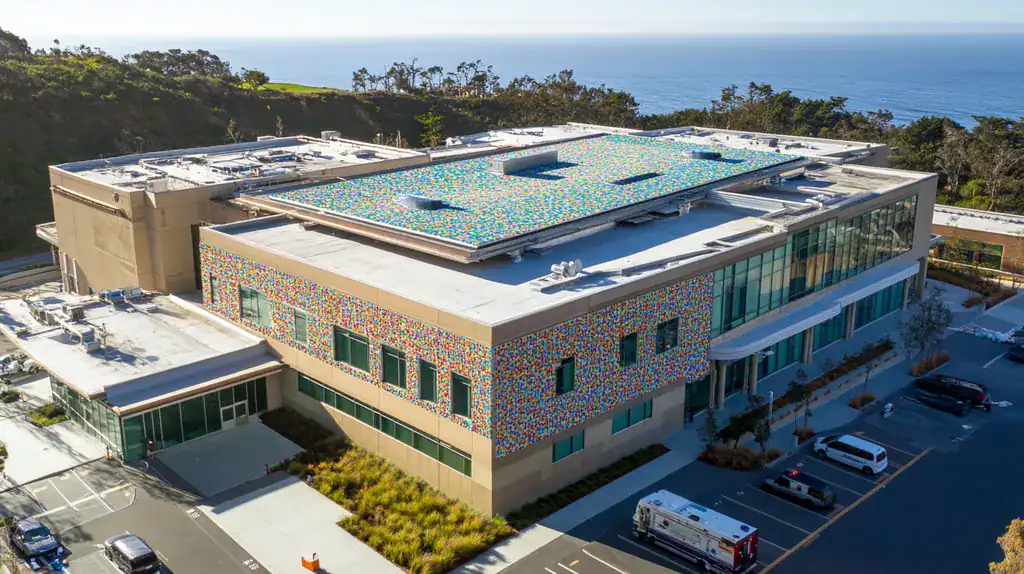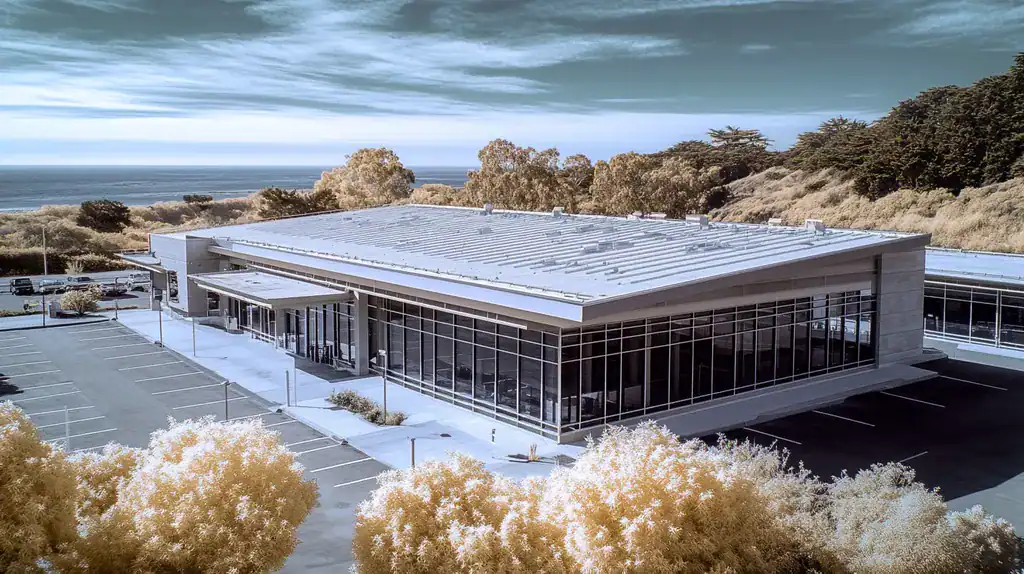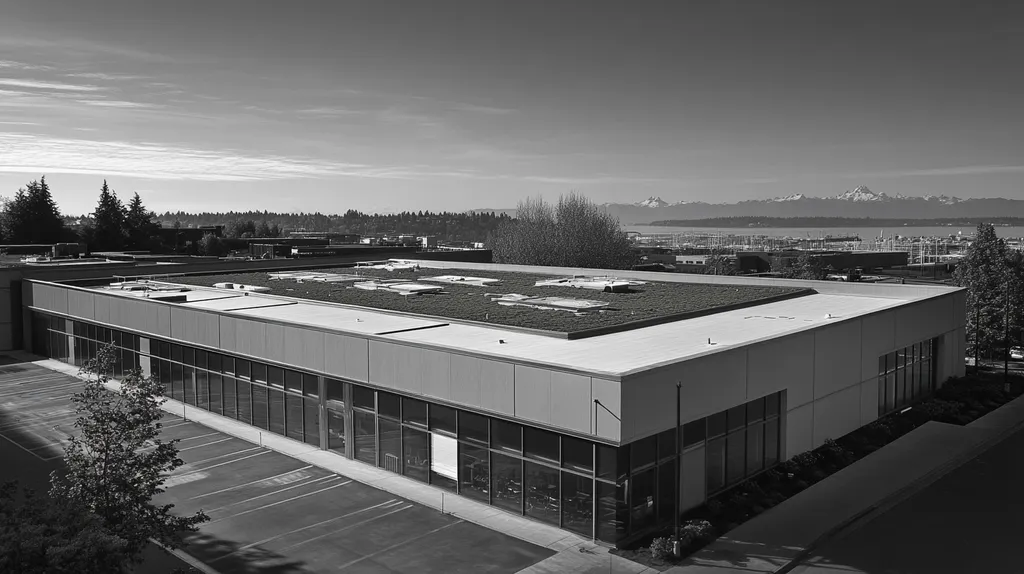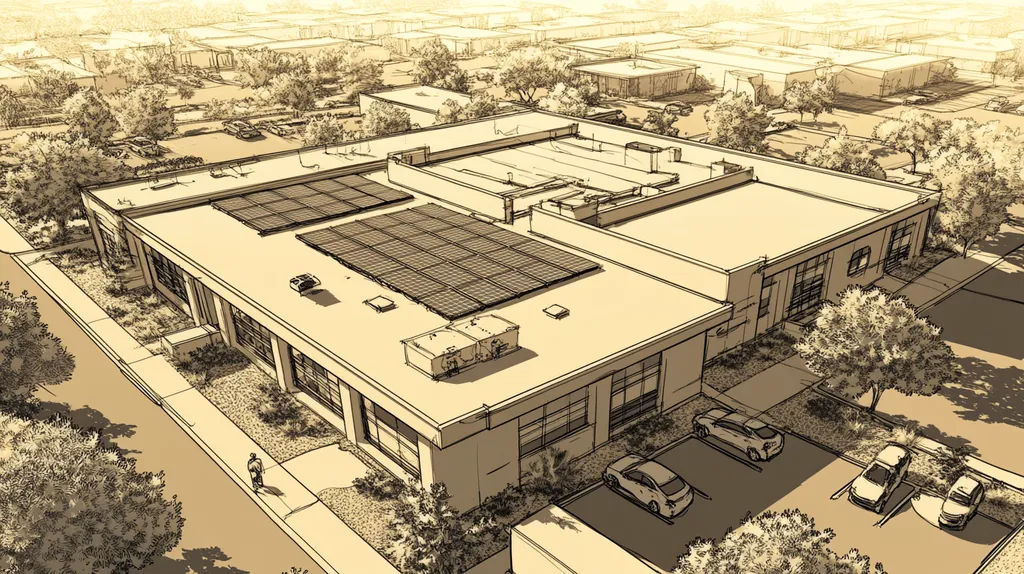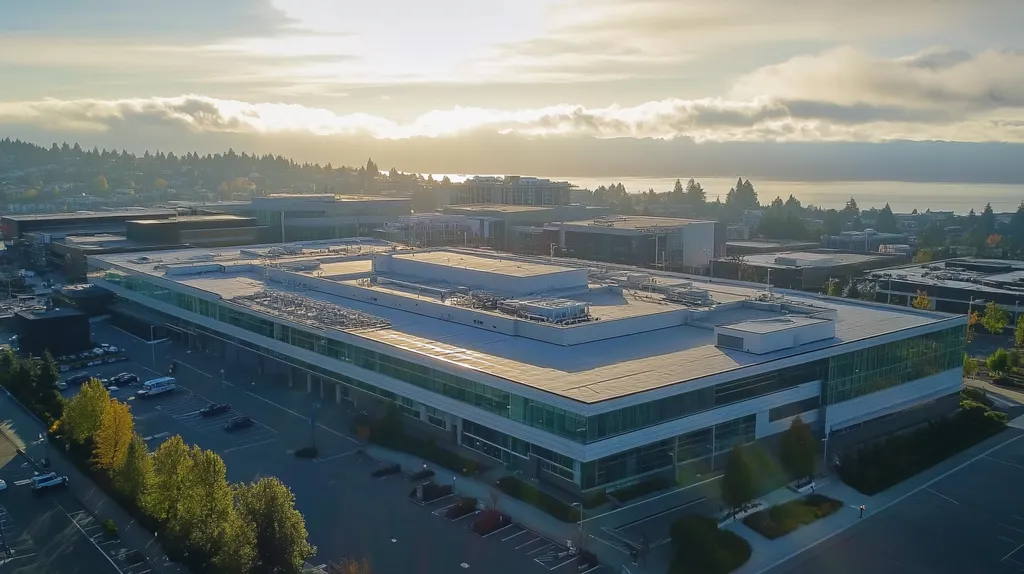Welcome to today’s Battle Royale featuring two roofing heavyweights: “TPO” in the east corner versus “EPDM” in the west!
Tonight’s showdown pits these contenders against each other across six punishing rounds designed to test every aspect of their performance for Industrial Roof Installation Timeline.
At stake? Millions in potential costs, decades of building protection, and the critical performance demands of modern commercial and industrial facilities.
Our professional judging panel will evaluate each round on technical merit, real-world performance, and value delivery. After all six rounds, we’ll declare our ultimate champion.
Ladies and gentlemen, facility managers and building owners… it’s time to rumble!
ROUND 1: INITIAL COSTS & INSTALLATION
In today’s volatile construction market, the decision between roofing materials can impact both immediate costs and long-term business operations. Industrial facility managers face mounting pressure to balance budget constraints with installation efficiency, making the choice between TPO and EPDM increasingly critical. Understanding the nuances of material costs, installation complexity, and project timelines has become essential for making informed roofing decisions that affect both immediate operations and long-term facility management.
Material Expenses
Material costs represent a significant portion of any industrial roofing project, often accounting for 40-50% of the total investment. TPO’s lower price point makes it an attractive option for budget-conscious facility managers, with costs typically ranging from $3-7 per square foot installed.
EPDM commands a premium price point, usually $4-8 per square foot installed, reflecting its established track record in the industry. However, this higher initial investment often translates to enhanced durability and weather resistance.
The cost difference becomes particularly significant on larger industrial projects, where even a small per-square-foot savings can result in substantial total project savings. TPO’s competitive pricing structure gives it a clear cost advantage.
For initial material expenses, TPO claims an “ADVANTAGE” over EPDM.
Installation Complexity
Installation complexity directly affects project duration and labor costs. TPO installations benefit from lighter weight materials and heat-welded seams, requiring fewer specialized tools and techniques.
A standard TPO installation typically takes 3-5 days, while EPDM installations generally require 4-6 days due to additional adhesive application and curing time requirements. (source: United Contracting Group)
This efficiency difference becomes particularly notable on time-sensitive projects where business disruption must be minimized. TPO’s streamlined installation process reduces both labor costs and facility downtime.
In terms of installation complexity, TPO earns another clear “ADVANTAGE”.
Project Timeline
Timeline management is crucial for industrial facilities where every day of roofing work can impact operations. TPO’s faster installation process allows businesses to resume normal operations more quickly, reducing revenue loss from operational disruptions.
EPDM’s longer installation period requires more extensive planning and coordination. The additional curing time needed for adhesives can extend project timelines, particularly in humid or adverse weather conditions.
For facilities operating on tight schedules or those requiring minimal disruption, TPO’s faster completion time provides significant operational benefits. The reduced timeline also helps minimize exposure to weather-related installation complications.
Regarding project timeline efficiency, TPO secures another “ADVANTAGE”.
ROUND 1 WINNER: TPO
ROUND 2: DURABILITY & LIFESPAN
When industrial roofing fails prematurely, the consequences ripple through entire operations. Recent data shows that emergency roof repairs can cost up to 10 times more than planned maintenance, making material durability a critical factor in long-term facility planning. For industrial property owners, understanding the lifespan differences between TPO and EPDM can mean the difference between strategic asset management and costly crisis management.
Material Resilience
TPO membranes demonstrate excellent resistance to impact damage and chemical exposure, crucial factors in industrial environments. Their heat-welded seams create strong bonds that resist separation, while the material’s flexibility helps accommodate building movement and thermal cycling.
EPDM’s molecular structure gives it superior weathering characteristics and exceptional resistance to ozone, UV radiation, and extreme temperatures. Its elastomeric properties allow it to expand and contract without compromising structural integrity.
In industrial settings where roof systems face harsh conditions, EPDM’s proven track record of maintaining its physical properties gives it a clear “ADVANTAGE” in material resilience.
Weather Performance
TPO’s reflective surface excels in hot climates by reducing heat absorption and lowering cooling costs. However, some formulations can show signs of premature aging when exposed to intense UV radiation over extended periods.
EPDM maintains consistent performance across all climate zones, from extreme heat to subzero temperatures. Its dark surface absorbs heat in winter months, potentially reducing heating costs in cold regions.
Both materials offer distinct climate-specific benefits, resulting in a “TIE” for weather performance.
Service Life
TPO roofing systems typically last 15-20 years when properly installed and maintained. Their performance history is shorter than some alternatives, as the technology continues to evolve with newer formulations.
EPDM systems regularly achieve 25-30 year lifespans, with some installations exceeding three decades of service. This extended lifespan often translates to lower total ownership costs despite higher initial investment.
With documented cases of exceptional longevity and minimal degradation over time, EPDM earns an “ADVANTAGE” in service life expectancy.
ROUND 2 WINNER: EPDM
ROUND 3: PERFORMANCE FACTORS
Industrial roofing decisions carry substantial financial implications, with premature failures costing facilities up to $10 per square foot in emergency repairs. Performance metrics like durability, energy efficiency, and maintenance requirements directly impact a facility’s bottom line. Understanding how TPO and EPDM perform across these critical factors helps facility managers make decisions that protect both their buildings and budgets.
Durability and Longevity
A commercial roof replacement project typically requires significant investment in both time and resources. The complete process, from planning through installation, averages about two weeks for either material choice. (source: Built Right Roofs)
TPO membranes demonstrate excellent resistance to UV radiation and chemical exposure, with an expected lifespan of 20-25 years. Their heat-welded seams create exceptionally strong bonds that resist separation even under extreme conditions.
EPDM systems regularly achieve 30+ year lifespans, with superior resistance to temperature extremes and weathering. Their proven track record of maintaining physical properties over decades makes them particularly attractive for long-term facility planning.
For durability and longevity, EPDM claims an “ADVANTAGE” over TPO.
Energy Efficiency
TPO’s highly reflective white surface delivers superior solar reflectivity, often exceeding 85% in new installations. This characteristic significantly reduces cooling costs in warm climates, making TPO particularly effective for facilities in southern regions.
EPDM’s dark surface absorbs solar energy, which can increase cooling costs in warm climates but provides beneficial heat gain during winter months. This property makes EPDM more energy efficient in northern climates where heating costs dominate.
The energy efficiency comparison results in a “TIE,” as each material offers distinct advantages based on geographic location and climate conditions.
Maintenance Requirements
TPO roofing systems typically require minimal ongoing maintenance due to their heat-welded seams and chemical resistance. Regular inspections can be performed quickly, with repairs generally limited to addressing physical damage rather than material degradation.
EPDM systems need more frequent inspection and maintenance, particularly around seams and flashings. Their rubber composition, while durable, can be more susceptible to punctures and requires specialized repair techniques.
The simpler maintenance profile and lower ongoing costs give TPO an “ADVANTAGE” in this category.
ROUND 3 WINNER: TPO
ROUND 4: MAINTENANCE REQUIREMENTS
For industrial facilities, roof maintenance directly impacts operational continuity and bottom-line profitability. Recent industry data reveals that every dollar deferred in preventive roof maintenance results in $4 of reactive repair costs. With industrial roofs covering vast square footage, choosing between TPO and EPDM’s maintenance profiles becomes a critical financial decision that affects long-term facility management strategies.
Routine Inspection Requirements
TPO roofing systems typically require bi-annual professional inspections to maintain warranty coverage. These inspections focus primarily on seam integrity, surface reflectivity, and drainage patterns, with most issues being detectable through visual examination.
Basic maintenance tasks for TPO include debris removal, drain clearing, and occasional pressure washing to maintain reflective properties. The material’s smooth surface makes these tasks relatively straightforward, often manageable with in-house maintenance teams.
EPDM systems demand quarterly inspections due to their greater susceptibility to mechanical damage and potential seam degradation. The rubber membrane requires more frequent examination of adhesive bonds and careful monitoring of expansion/contraction patterns.
For inspection requirements, TPO claims an “ADVANTAGE” due to its reduced frequency and complexity of required checks.
Repair Complexity
TPO repairs typically involve heat-welding new material over damaged areas, creating seamless bonds that maintain system integrity. Most repairs can be completed quickly, minimizing facility disruption.
The white surface of TPO makes damage identification straightforward, allowing maintenance teams to spot potential issues before they become critical. Patch materials readily blend with existing surfaces, maintaining aesthetic consistency.
EPDM repairs require specialized adhesives and precise application techniques. The black surface can make damage detection more challenging, often requiring more intensive inspection methods.
Regarding repair complexity, TPO earns another clear “ADVANTAGE” due to simpler repair procedures and better damage visibility.
Long-term Maintenance Costs
TPO systems generally incur lower annual maintenance costs due to their durable seam construction and resistance to surface contamination. The material’s chemical resistance reduces the need for specialized cleaning products or treatments.
Regular maintenance expenses for TPO primarily involve basic cleaning and occasional resealing of penetration points. The simplified maintenance profile allows for more predictable budget planning.
EPDM systems often require more frequent intervention and specialized maintenance procedures. The rubber membrane may need periodic recoating and more extensive seam maintenance as the system ages.
For long-term maintenance expenses, TPO secures another “ADVANTAGE” through reduced ongoing costs and simpler maintenance requirements.
ROUND 4 WINNER: TPO
ROUND 5: SUSTAINABILITY CREDENTIALS
Environmental regulations and corporate sustainability initiatives are reshaping industrial roofing decisions. With commercial buildings accounting for nearly 35% of urban carbon emissions, choosing between TPO and EPDM now carries significant environmental implications. The right roofing selection can dramatically impact a facility’s carbon footprint, energy consumption, and waste generation, making sustainability credentials a crucial factor in modern industrial roofing decisions.
Energy Efficiency
Commercial roof installations can take between 1 to 5 weeks, with material choice significantly impacting both installation efficiency and long-term energy performance. TPO’s highly reflective surface and rapid installation characteristics make it particularly attractive for projects with tight timelines. (source: Roper Roofing and Solar)
TPO membranes reflect up to 87% of solar radiation, reducing cooling loads and associated energy consumption. This reflective property remains consistent throughout the membrane’s lifetime, maintaining energy efficiency benefits even as the roof ages.
EPDM’s traditional black surface absorbs more solar heat, potentially increasing cooling costs by 25-35% compared to reflective alternatives. While white EPDM options exist, they typically don’t match TPO’s reflective performance.
For energy efficiency, TPO claims a clear “ADVANTAGE” over EPDM.
Environmental Impact
TPO manufacturing processes require less energy and produce fewer emissions compared to traditional roofing materials. The membrane’s lightweight nature also reduces transportation-related carbon emissions during delivery and installation.
The material’s clean composition means TPO creates minimal environmental impact during its service life. It doesn’t leach harmful chemicals during rainfall and maintains its structural integrity without releasing pollutants.
EPDM production involves more energy-intensive processes and higher carbon emissions. While the material itself is inert, its manufacturing footprint exceeds that of TPO.
Regarding environmental impact, TPO earns another “ADVANTAGE”.
Recyclability
TPO membranes can be fully recycled at the end of their service life, with manufacturers operating established recycling programs. The recycled material maintains high quality, allowing it to be reprocessed into new roofing products.
The material’s homogeneous composition makes TPO easier to process for recycling. Advanced recycling technologies can separate and reuse nearly 100% of TPO roofing components.
While EPDM can technically be recycled, the process is more complex and less widely available. The material’s chemical composition makes it more challenging to repurpose effectively.
For recyclability, TPO secures another “ADVANTAGE”.
ROUND 5 WINNER: TPO
ROUND 6: SPECIALIZED APPLICATIONS
Industrial roofing installations face increasing complexity as facilities integrate advanced HVAC systems, solar arrays, and specialized equipment mounts. With installation delays costing facilities up to $5,000 per day in lost productivity, choosing the right roofing system for specialized applications has become critical. Understanding how TPO and EPDM perform in complex installations can mean the difference between smooth project execution and costly setbacks.
Adhesive Requirements
Commercial roof installations require careful consideration of adhesive compatibility and application methods. TPO installations rely primarily on heat-welded seams, which create strong bonds but demand precise temperature control and specialized equipment.
The heat-welding process for TPO can be particularly challenging around complex penetrations and irregular surfaces. Weather conditions can significantly impact weld quality, potentially extending installation timelines.
EPDM systems offer greater flexibility in adhesive choices, including cold-applied options that perform well in varying conditions. The material’s adaptability to different adhesive systems allows for more consistent installation progress across diverse project requirements.
For adhesive requirements, EPDM claims an “ADVANTAGE” due to its versatile bonding options.
Weather Considerations
TPO installations face significant weather constraints, as proper heat-welding requires specific temperature ranges and dry conditions. Installation schedules often need wider weather windows to ensure optimal seam formation.
The material’s rigid nature can make it more challenging to handle and position during temperature extremes. These limitations can extend project timelines, particularly in regions with variable weather patterns.
EPDM demonstrates superior flexibility across a broader range of weather conditions. Its rubber composition maintains workability in both cold and hot environments, reducing weather-related installation delays.
Regarding weather adaptability, EPDM earns another clear “ADVANTAGE”.
Customization and Complexity
Installation timelines for commercial roofing projects typically span 1-2 weeks, with material selection and project complexity significantly impacting completion schedules. TPO and EPDM installations can progress efficiently when proper planning addresses specialized requirements. (source: Luna Siding and Roofing Inc.)
TPO systems require precise cutting and fitting around roof penetrations. The material’s limited flexibility can complicate installations involving numerous mechanical units or irregular shapes.
EPDM’s superior elasticity allows for easier manipulation around complex roof features. The material readily conforms to irregular surfaces and accommodates building movement, simplifying installation around specialized equipment.
For handling complex configurations, EPDM secures another “ADVANTAGE”.
ROUND 6 WINNER: EPDM
AND THE WINNER IS…
After six grueling rounds of technical evaluation, we have our verdict…
Ladies and gentlemen, with a commanding 4-2 victory, your new Industrial Roof Installation Timeline Champion is… TPO!
TPO dominated the early rounds with superior cost efficiency and installation speed, then sealed its victory with outstanding performances in maintenance requirements and sustainability credentials. Its rapid deployment capabilities and lower lifetime maintenance costs proved decisive in this heavyweight battle.
But don’t count EPDM out! This seasoned veteran showed its worth in durability and specialized applications, making it the superior choice for facilities requiring maximum weather resistance or complex customization. When the stakes include decades of performance in challenging environments, EPDM remains a formidable contender.
Remember, fight fans: Every facility brings its own unique requirements to the ring. Regional climate conditions, building specifications, and local regulations can all influence which material ultimately takes the title in your specific situation. For your next roofing showdown, consult with qualified professionals who can evaluate these factors in detail.
In the high-stakes arena of industrial roofing, victory doesn’t always go to the fastest installer – it goes to the system that best matches your facility’s specific requirements. Choose your champion wisely!
FREQUENTLY ASKED QUESTIONS
Q. What are the initial costs for a commercial roof installation?
A. Initial costs vary based on materials, with TPO typically cheaper than EPDM. TPO ranges from $3-7 per square foot while EPDM costs from $4-8, making TPO more appealing for budget-conscious projects.
Q. How long can I expect my industrial roof to last?
A. TPO roofs generally last 15-20 years, while EPDM can last 25-30 years. The longevity of each option varies based on installation quality and maintenance practices.
Q. What maintenance do commercial roofs require?
A. TPO requires bi-annual inspections; EPDM calls for quarterly checks. Both benefit from regular debris removal and addressing minor repairs promptly to prevent costly future issues.
Q. Which roofing option is more energy efficient?
A. TPO roofs offer better energy efficiency due to their reflective surface, reducing cooling costs significantly. EPDM is more effective in colder climates but may incur higher cooling costs in warm areas.
Q. How easy is it to repair TPO compared to EPDM?
A. TPO repairs are simpler, involving heat-welding and quick fixes, minimizing operational downtime. In contrast, EPDM requires specialized adhesives, making repairs more complex and time-consuming.
Q. What are the environmental benefits of TPO roofs?
A. TPO roofs are energy-efficient and recyclable after their lifespan, reducing waste. Their production involves less energy, minimizing carbon emissions during manufacturing and installation compared to EPDM.
Q. Is one roofing material better for specialized applications?
A. EPDM is generally better for specialized applications due to adhesive flexibility and weather adaptability. Adaptive properties simplify handling around complex installations, minimizing project delays.

